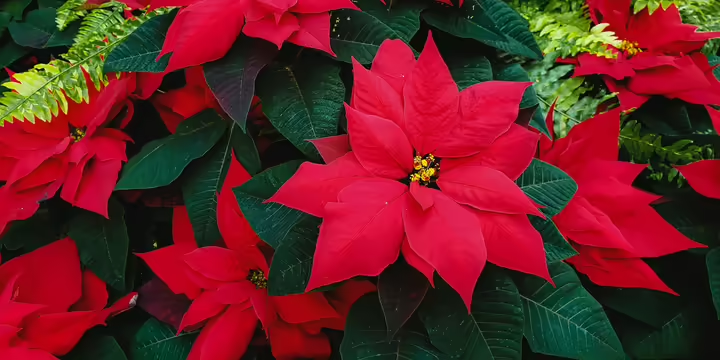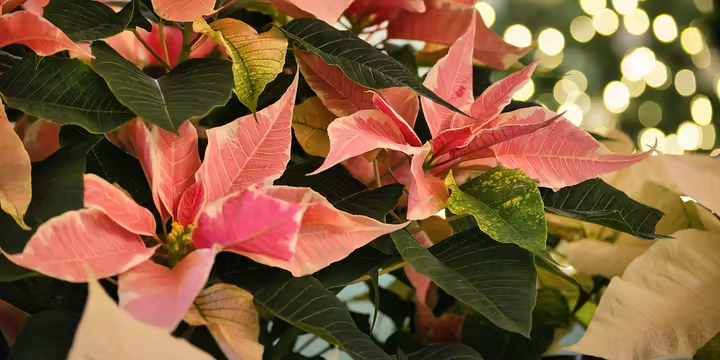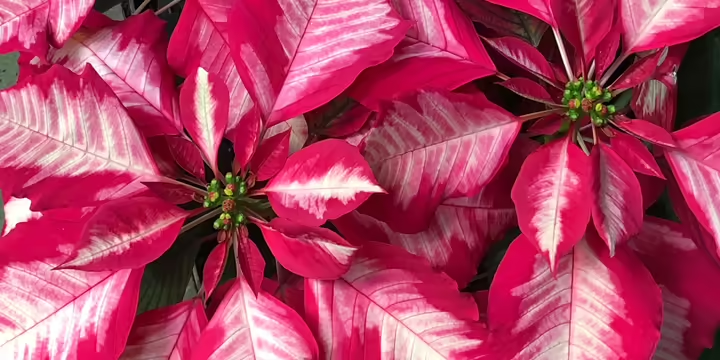Euphorbia pulcherrima
Poinsettias are traditional Christmas plants that will last through the Christmas season and beyond. With their varying shades of cheery colors, Poinsettias are the bestselling potted plant in the United States and Canada. If taken care of properly, their bright displays can last for several weeks.
The Poinsettia, Euphorbia pulcherrima, is a member of the Euphorbiaceae or spurge family. This colorful plant was discovered near the present-day city of Taxco, Mexico and the valleys surrounding Cuernavaca (in southern Mexico). While we know the plant as an indoor plant, in Mexico Poinsettias grow to be large woody shrubs, often reaching 10 feet tall.
The Poinsettia we see today comes from many years of breeding and engineering. During the mid-1950, plant breeding research began and has led to many of the current improved varieties and cultivars. Today’s Poinsettia is a free-branching hybrid plant with larger, longer-lasting bracts. Hybridizing has resulted in more than 100 varieties including white, cream, yellow, peach, pink, purple, and marbled. Red Poinsettias still account for more than 70% of sales.
How to select a Poinsettia
Understanding more about the plant will help with selection. The large colored parts commonly thought to be the "flowers" of Poinsettias are actually modified leaves called bracts. The greenish-yellow flowers (cyathia) are clustered at the center of the bracts.
- Choose a plant with dark green foliage down to the soil line.
- Choose bracts that are completely colored. Do not purchase Poinsettias with a lot of green around the bract edges. Do not choose plants with fallen or yellowed leaves.
- The Poinsettia should look full, balanced and attractive from all sides. The plant should be 2 1/2 times taller than the diameter of the container
- Choose plants that are not drooping or wilting.
- Do not purchase plants that are displayed in paper or plastic sleeves. Plants held in sleeves will deteriorate quickly.
- Do not purchase plants that have been displayed or crowded close together. Crowding can cause premature bract loss.
- Check the plant’s soil. If it’s wet and the plant is wilted, this could be an indication of root rot.
- Check undersides of leaves for insects like aphids and whiteflies.
- Check the Poinsettia's maturity. Check the true flowers which are located at the base of the colored bracts. If the flowers are green or red-tipped and fresh looking the bloom will "hold" longer than if yellow pollen is covering the flowers
When you take the Poinsettia home, be sure to have it sleeved or covered when outdoor temperatures are below 50°F.



